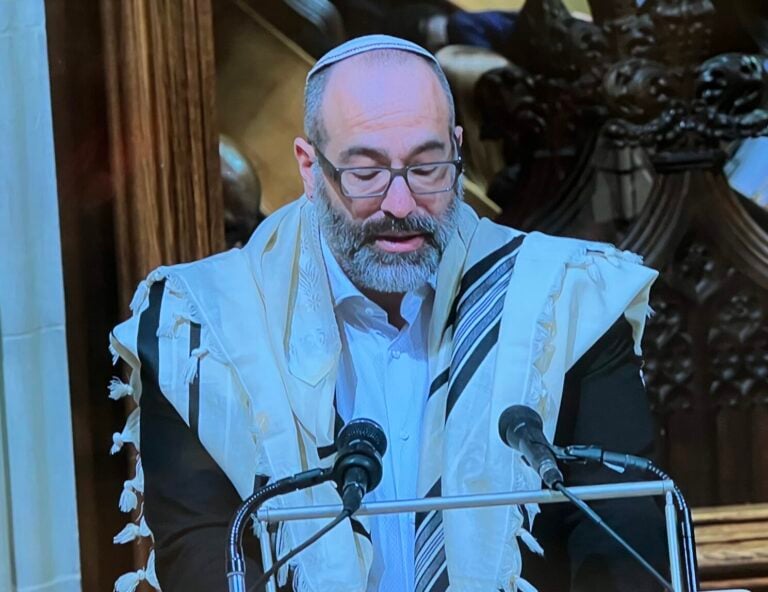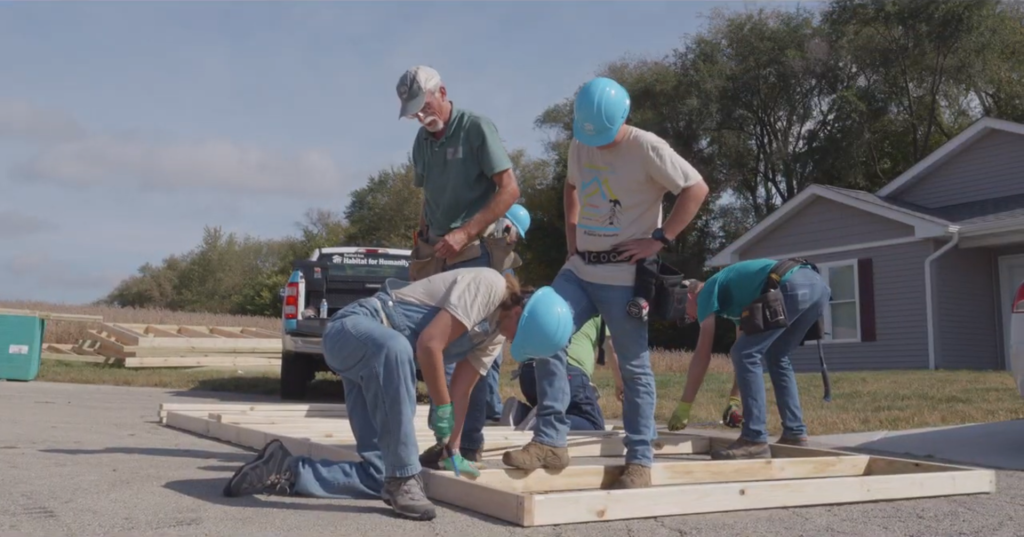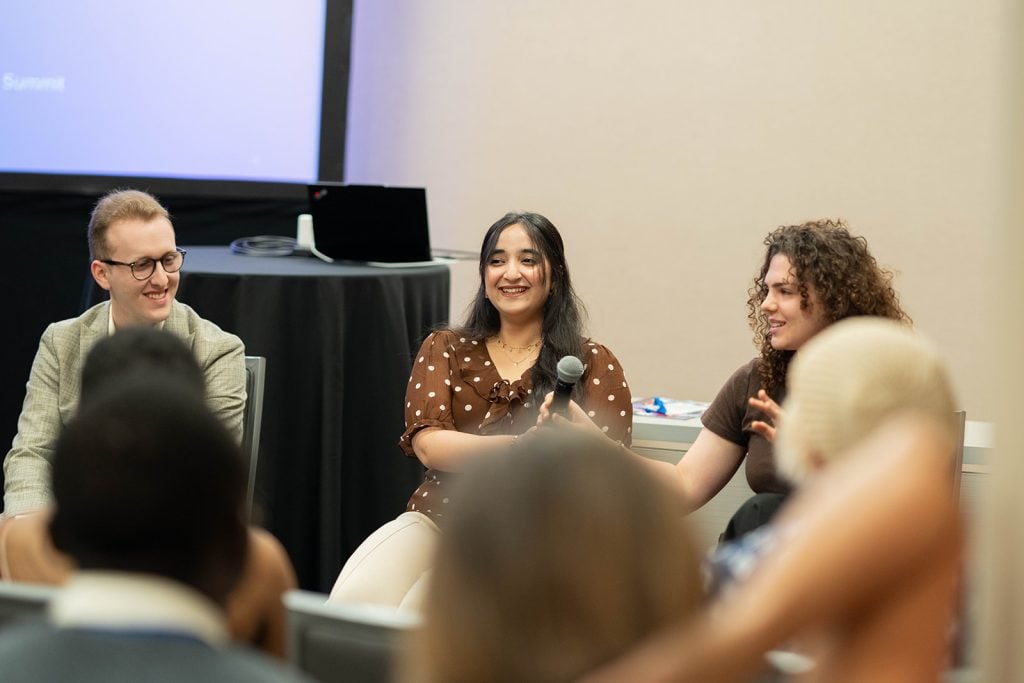(Miller Center, Hebrew College) Needless to say, I do not often find myself in cathedrals on Shabbat (Sabbath) morning. However, this past Saturday I was invited to participate in an interreligious service at the National Cathedral in Washington, DC, organized by The International Torch for Peace Foundation.
With so much division, acrimony, and violence in our country and throughout the world, this gathering felt like a brief reprieve and an opportunity to renew my commitment to pluralism. It was an unusual but meaningful way to spend part of my Shabbat. Interacting with and hearing from brave and caring religious, cultural, and civic leaders was both inspiring and grounding. I found it particularly moving to hear the prayers and reflections of first responders, fire fighters, and police people, interspersed among those of clergy, community organizers, and political figures. It reflected the host’s commitment to nonviolent social change through the creation of “communities of trust.” As is so often the case at such gatherings, the voices of young people filled the air with promise and hope.
In my allotted time, I shared the following brief prayer for peace based on the liturgical compositions of the Hasidic writer Rabbi Nathan Sternhartz of Nemirov (d. 1844), as inspired by the teachings of his revered master Rabbi Nahman of Bratslav (d. 1810):
May it be Your will,
Holy One, our God, and God of our ancestors,
that you blot out warfare and bloodshed from the world
and in its place draw forth a great and glorious peace
so that “nation shall not lift sword against nation
neither shall they learn war anymore” (Isaiah 2:4).
Rather, may all the inhabitants of the earth
recognize and deeply know this great truth:
We have not come into this world
for strife and division,
nor for hatred and rage,
nor incitement and bloodshed.

We have come here only
to encounter You,
eternally blessed One.
And so, we ask your compassion upon us;
bring forth
through us
what is written in Your holy teachings:
“I shall place peace upon the earth
and you shall lie down safe and undisturbed
and I shall banish evil beasts from the earth
and the sword shall not pass through your land” (Leviticus 26:6).
“Let justice roll down like waters
and righteousness like an ever-flowing stream,
for the earth shall be full
of the knowledge of the Holy One
as the waters cover the sea” (Amos 5:24).
So may it be.
And let us say:
Amen.1
While I did not have the opportunity to comment at length on this liturgical offering, part of what drew me to it is the fact that Rabbi Nahman—the inspirational figure behind the prayer—was a person who struggled mightily to find peace in his lifetime. He was an individual who felt fiercely, including melancholy in the face of a world he experienced as being riddled with lies and cruelty. The fact that this prayer emerged from the teachings of a man who ached for redemption makes it even more poignant; it helps me to acknowledge my own pain and bewilderment as I attempt to work for peace and justice.
Further, both Rabbi Nahman and Rabbi Nathan grappled with the place of makhloket, “disagreement” or “argumentation” in the religious life. While they regularly lament the seeming ubiquity of pettiness, dishonesty, degradation, and violence, like many earlier Jewish sages they also speak of the nobility of argumentation in pursuit of truth and righteousness (“for the sake of heaven” in older rabbinic parlance). In one well-known sermon, Rabbi Nahman (based on medieval Jewish mystical sources) goes so far as to compare the disagreements of Torah scholars to God’s creative process. Just as the Divine engages in conscious acts of self-expression and self-limitation, so too must Jewish exegetes. For me, this, and other such teachings on makhloket are invaluable resources for constructive engagement across difference—both intra-Jewish and interreligious. Whether we are scholars or not, each of us has valuable contributions to make and they are all partial.

The Saturday morning service was lengthy and provided ample time for reflection. I was fortunate to be sitting at the back of the stage, just a few feet away from the exquisite inlaid marble lectern from which Bishop Mariann Budde recently preached and where the Revered Dr. Martin Luther King, Jr. gave his last Sunday sermon in the spring of 1968. As I took in the awe-inspiring sight of the Natonal Cathedral and listened to the stirring words and musical offerings of my fellow participants, I was reminded that the sacred work of bridge-building is ongoing, that it requires the contributions of many different voices, and that we are not the first or the last to engage in such efforts.
In closing the service, one of our hosts, the Reverend Canon Leonard Hamlin Sr., invoked the great Jewish theologian, scholar, and social activist, Abraham Joshua Heschel (d. 1972, scion of several Hasidic dynasties), quoting a brief passage from Rabbi Heschel’s modern classic The Sabbath:
To gain control of the world of space is certainly one of our tasks.
The danger begins when in gaining power in the realm of space
we forfeit all aspirations in the realm of time.
There is a realm of time where the goal is not to have but to be,
not to own but to give,
not to control but to share,
not to subdue but to be in accord.
Life goes wrong when the control of space,
the acquisition of things of space,
becomes our sole concern.
I was deeply moved to hear these words from a Christian clergy person in one of the most hallowed religious spaces in our country.
I was deeply moved to hear these words from a Christian clergy person in one of the most hallowed religious spaces in our country. To hear him read these lines at the National Cathedral on Shabbat—the great “cathedral in time” as Heschel called it—was powerful. It was a rare instance in which the grandeur and beauty of space and time felt like they were truly “in accord.” In that moment, I was inspired anew to contemplate the age-old rabbinic adage that Shabbat is a “foretaste of the world to come.”
1I adapted my rendering of this prayer from those of Aharon Varady and Rabbi Deborah Silver. See Varady’s brief comments on the textual origins of this liturgical selection.
Rabbi Or Rose, founding Director of The Miller Center of Hebrew College, serves as a senior consultant to Interfaith America. Among his recent publications is the award-winning, co-edited volume With the Best of Intentions: Interreligious Missteps & Mistakes (Orbis Books). His forthcoming book, My Legs Were Praying: A Biography of Abraham Joshua Heschel for teen readers will be published in May 2025 (Monkfish Book Publishing).




